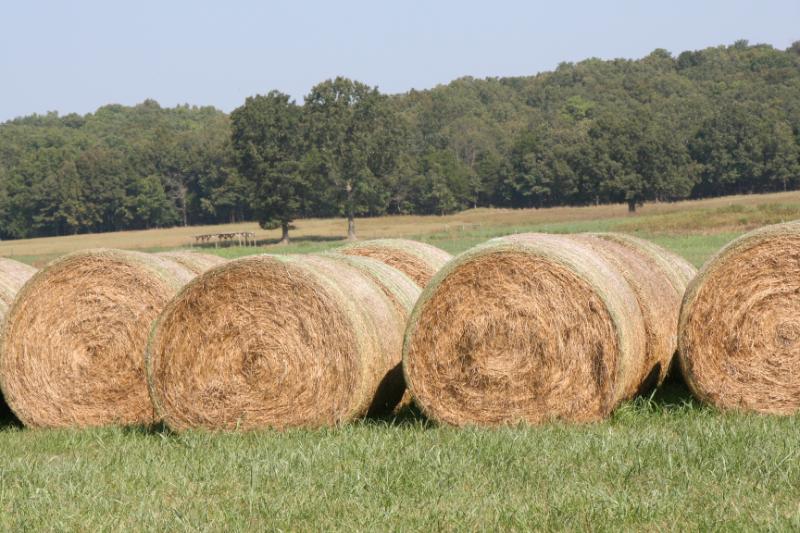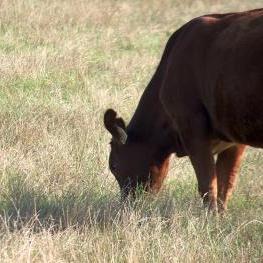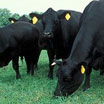Arkansas Hay Production
Arkansas producers grow some of the best quality hay in the south. Producing high-yielding and top-quality hay requires attention to harvest management, soil fertility, pest management, and good storage methods.
Hay, silage, and crop residues are mainly fed during winter, but can be used anytime to supplement low pasture availability.
Good quality hay can be made from almost all forage species grown in Arkansas. But every species including alfalfa can be very poor quality if allowed to become too mature.
What impacts forage quality?
Forage quality is influenced mainly by maturity of the forage at harvest time and to a lesser extent by soil fertility. Fiber content of the forage increases as the forage matures and is the primary factor that controls the animal's intake.
Visual evaluation of hay may indicate good or poor forage condition, but a lab analysis is the only way to determine nutrient content. Hay samples can be tested for nutrient content by the University of Arkansas Forage Lab and by private laboratories.
Learn about nitrate poisoning in cattle
Producing Quality Hay

- Forage test to determine hay quality. This is important for feeding as well as being an important factor for selling hay.
- Harvest Early! Forage maturity at harvest is #1 factor affecting quality. Short hay harvest intervals favors good quality.
- Rake and Bale to minimize leaf loss. Leaves are higher quality than stems. Retaining leaves during raking and baling helps maintain quality.
- Fertilize Correctly. Low fertility leads to weeds, low percentage of forage leaf, poor forage persistence, and stemmy hay.
- Add Legumes. Legumes are higher quality at a given stage of growth than grasses. Adding legumes in mixtures with grasses can improve hay quality. Management for legume/grass hay includes all of the above.
- Cover Hay if Possible. Barns or tarps work well. If no cover is available stack in rows at least 3 ft. apart in the open, high on a well drained slope, preferably on poles, crushed rock, or pallets. Storage losses can easily exceed 25% on poorly stored hay. High quality hay spoils faster than poor quality hay if left uncovered.

Arkansas Hay Producers Database
The web-based Arkansas Hay Producers Directory from the University of Arkansas Cooperative Extension Service was created to allow Arkansas producers to share information about their available hay. Click on link below to learn more or enroll in the program.
Learn more about the hay producers database

Arkansas Bermudasprigger Directory
The web-based Arkansas Bermudagrass Spriggers Directory from the University of Arkansas Cooperative Extension Service was created to allow Arkansas producers to share information about their bermudagrass production.
Learn more about the Bermudagrass directory.
Publications
- FSA3137 Annual and Perennial Forage Clovers for Arkansas
- FSA3111 Calibrating Drills and Broadcast Planters for Small-Seeded Forages
- FSA15 Establishing Alfalfa for Forage
- FSA19 Establishing Bermudagrass for Forage
- FSA3134 Interseeding Clover and Legumes in Grass Sod
- FSA3110 Seeding and Fertilization Rate Conversions for Wildlife Food Plots and Small Areas
- FSA2159 Strip-Seeding Strategy for Establishing Clover in Pastures
- FSA2035 Forage Legume Inoculation
- FSA3050 Forage Lespedeza
- FSA2032 Summer Annual Grasses
- FSA2133 Tall Fescue for Forage
- FSA2140 Friendly Endophyte-Infected Tall Fescue for Livestock Production
- FSA2139 General Traits of Forage Grasses Grown in Arkansas
- FSA2160 Value of Nitrogen Fixation From Clovers and Other Legumes
- FSA3053 Bagged Conventional Silage
- FSA3051 Baled Silage for Livestock
- FSA34 Estimating Haying and Silage Machinery Costs
- MP434 Management of Hay Production
- FSA3063 Using Cereal Grain Forages and Mixtures With Annual Ryegrass for Hay and Silage
- FSA3052 Principles of Silage Making
- FSA3090 Rainfall Effects on Wilting Forages
- FSA3025 Common Arkansas Plants Poisonous to Cattle
- FSA3024 Nitrate Poisoning in Cattle
- FSA3069 Prussic Acid
Find out more about nitrate poisoning in cattle.